Three Secrets
Brief Synopsis
Cast & Crew
Robert Wise
Eleanor Parker
Patricia Neal
Ruth Roman
Frank Lovejoy
Leif Erickson
Film Details
Technical Specs

Synopsis
When an airplane crashes on a mountain near Bishop, California, the only survivor is a five-year old boy. Hardin, a reporter, learns that the now-orphaned boy, Johnny Peterson, was adopted as a baby from a shelter. Three boys listed with the same birthday as Johnny's were placed by the shelter, but the matron refuses to reveal the names of their mothers. One of those women, Susan Chase, is now married to Bill, a lawyer, but has never told him about the child she gave birth to five years earlier. When she learns that the injured boy stranded on the mountain was adopted, she becomes convinced that the child is hers. After Bill leaves on a business trip, Susan drives all night to the site of the rescue effort. During the drive she reflects on the events that led to the birth of her son: During the war, Susan falls in love with Paul Radin, a Marine. Before he is shipped out, he tells Susan that he is still in love with a woman back home, whom he has known since childhood. Later, a pregnant Susan tries to kill herself, but her mother calls a doctor and, after the baby is born, convinces Susan to give him up and put the past behind her. Two other women are at the shelter that day. One of them, Phyllis Horn, a reporter, is also watching the rescue effort. She recognizes Susan and tells her that the boy could also be her child. Over coffee, Phyl remembers returning home from London five years earlier: When Bob Duffy, her husband, fails to meet her at the airport, Phyl goes to his favorite bar in search of him. He announces that he can no longer tolerate her job and intends to get a divorce. Determined not to lose him, Phyl later begs Duffy to reconsider and promises that she will stay at home in the future. They make up, but the following week, when her boss, Mark Harrison, assigns her to cover the Pacific war, Phyl cannot resist. Two weeks after her divorce becomes final, Phyl discovers that she is pregnant. She immediately telephones Duffy, only to learn that he has remarried. Phyl is brought back to the present when a report reveals that radio contact with the rescue party has been lost following a landslide. Phyl and Susan's attention is distracted when a woman starts an argument with one of the reporters. Phyl recognizes her as Ann Lawrence, the third woman at the shelter. Later, Ann tells her story: Five years earlier, she is a dancer in love with wealthy Gordon Crosley. One night, when she goes to Gordon's apartment and finds he is not there, his associate, Del Prince, explains that Gordon no longer wants to see her. Convinced that Prince is trying to keep her away from Gordon because she is only a chorus girl, Ann pursues him to California. Prince again advises her to forget Gordon. After Ann tells Prince that she is pregnant, Prince tells her to return that evening. When she does, a man named Bobby Lynch, who claims to be a former lover of hers, is there. Prince tells her that Lynch will claim to be the father of her child and offers her a check signed by Gordon. Hysterical, Ann finally realizes that Prince has been telling the truth about Gordon, and kills her lover. She is convicted of manslaughter and gives up her son for adoption. After she finishes her story, Susan reveals that she is unable to have any more children. The rescuers reach Johnny and signal that he is still alive. Phyl now decides to discover which of the women is the real mother of the boy. Meanwhile, Bill arrives in response to a telegram from Susan. She reveals her suspicions about Johnny, and Bill responds that if the child is hers they will take him home. While Bill and Susan talk, Phyl learns that Johnny is Ann's child. She is about to relay this to Susan when Ann interrupts and states that of the three of them, Susan is the best suited to be a mother and should try to adopt Johnny.

Director

Robert Wise
Cast

Eleanor Parker

Patricia Neal

Ruth Roman

Frank Lovejoy

Leif Erickson
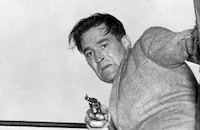
Ted De Corsia

Edmon Ryan

Larry Keating
Katherine Warren

Arthur Franz

Peter Brocco
Frank Fenton
Duncan Richardson
Joel Allen
Gil Warren
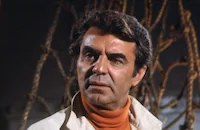
Paul Picerni
William Self
Glenn Denning
Mike Mahoney

Russ Conway
Jay Adler
Frances Williams

Nana Bryant
Janet Warren
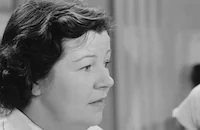
Margaret Bert
Bill Welsh
John Morgan
Mary Alan Hokanson
Cherie May
Edna Holland
Ray Hyke
Ralph Montgomery

Billy Bevan
George Lynn
Mervin Williams
Rory Mallinson
Tim Graham
Frank Wilcox

Ross Elliott
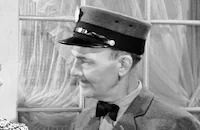
John Butler
Cathy Dart
Willard Waterman
Mack Williams
Chris Drake
Wheaton Chambers
Edmund Glover
Perc Launders
Lester Dorr
Walden Boyle
Bill Tannen
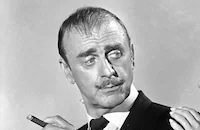
John Dehner
Eleanor Audley
Eula Guy

Ken Tobey
David Mcmahon
Charles Wagenheim
Crew
David Buttolph
Charles H. Clarke
Edwin Dupar
Sid Hickox
Anthony Jowitt
Gina Kaus
Charles Lang
Fred M. Maclean
William Mcgann
Maurice De Packh
Martin Rackin
Thomas Reilly
Leah Rhodes
Russell Saunders
Milton Sperling
Perc Westmore

Film Details
Technical Specs

Articles
Robert Wise (1914-2005)
Born on September 10, 1914 in Winchester, Ind., Wise was a child of the Depression who quit college to earn a living in the movie industry. He began as an assistant cutter at RKO, where he worked his way up to the position of film editor and earned an Oscar® nomination for his bravura work with Orson Welles on Citizen Kane. He also edited The Magnificent Ambersons (1942) for Welles, along with several other RKO films.
Wise became a director by default when RKO and producer Val Lewton assigned him to The Curse of the Cat People (1944) after Gunther von Fritsch failed to meet the film's production schedule. Wise turned the film into a first-rate psychological thriller, and enjoyed equal success with another Lewton horror film, The Body Snatcher (1945).
Critical praise also was showered upon Wise's Born to Kill (1947), a crime melodrama; and Blood on the Moon (1948), an unusual psychological Western starring Robert Mitchum. Even more highly regarded was The Set-Up (1949), a no-punches-pulled boxing drama that won the Critics' Prize at the Cannes Film Festival. Wise moved on from RKO in the early 1950s, directing one of the movies' classic alien invasion films, The Day the Earth Stood Still, for 20th Century Fox.
At MGM he directed Executive Suite (1954), a compelling all-star boardroom drama; Somebody Up There Likes Me, a film bio of boxer Rocky Graziano that established Paul Newman as a major star; and The Haunting (1963), a chilling haunted-hause melodrama. His films for United Artists include Run Silent, Run Deep (1958), a submarine drama with Clark Gable and Burt Lancaster; I Want to Live! (1958), a harrowing account of a convicted murderess on Death Row, with Susan Hayward in her Oscar-winning performance; and the crime caper Odds Against Tomorrow (1959).
Wise served as president of the Academy of Motion Picture Arts and Sciences and the Directors Guild of America. He was awarded the Academy's Irving G. Thalberg Memorial Award in 1966, and the Directors Guild's highest honor, the D.W. Griffith Award, in 1988. He remained active as a director through the 1970s. His final film, Rooftops (1989) was a musical with an urban setting that recalled West Side Story.
The films in TCM's salute to Robert Wise are Citizen Kane (1941), The Magnificent Ambersons (1942), The Curse of the Cat People (1944), The Body Snatcher (1945), Born to Kill (1947), Blood on the Moon (1948), The Set-Up (1949), Executive Suite (1954), Somebody Up There Likes Me (1956), Run Silent, Run Deep (1958), B>West Side Story (1959), Odds Against Tomorrow (1959) and The Haunting (1963).
by Roger Fristoe

Robert Wise (1914-2005)
Kenneth Tobey (1917-2003)
Born in Oakland, California on March 23, 1917, Tobey originally intended to be a lawyer before a stint with the University of California Little Theater changed his mind. From there, he went straight to New York and spent nearly two years studying acting at the Neighborhood Playhouse, where his classmates included Gregory Peck, Eli Wallach and Tony Randall. Throughout the '40s, Tobey acted on Broadway and in stock before relocating to Hollywood. Once there, Tobey soon found himself playing a tough soldier in films like I Was a Male War Bride and Twelve O' Clock High (both 1949); or a tough police officer in Kiss Tomorrow Goodbye and Three Secrets (both 1950). Such roles were hardly surprising, given Tobey's craggy features, unsmiling countenance and rough voice.
Needless to say, no-nonsense, authority figures would be Tobey's calling for the remainder of his career; yet given the right role, he had the talent to make it memorable: the smart, likeable Captain Hendrey in The Thing From Another World (1951); the gallant Colonel Jack Evans in the "prehistoric dinosaur attacks an urban center" genre chiller The Beast from 20,000 Fathoms (1953, a must-see film for fans of special effects wizard, Ray Harryhausen; and as Bat Masterson, holding his own against Kirk Douglas and Burt Lancaster in Gunfight at the O.K. Corral (1957).
Television would also offer Tobey much work: he had his own action series as chopper pilot Chuck Martin in Whirlybirds (1957-59); and had a recurring role as Assistant District Attorney Alvin in Perry Mason (1957-66). He would also be kept busy with guest appearances in countless westerns (Gunsmoke, Bonanza, The Virginian) and cop shows (The Rockford Files, Barnaby Jones, Ironside) for the next two decades. Most amusingly, the tail end of Tobey's career saw some self-deprecating cameo spots in such contemporary shockers as The Howling (1981); Strange Invaders (1983) and his role reprisal of Captain Hendry in The Attack of the B-Movie Monsters (2002). Tobey is survived by a daughter, two stepchildren, and two grandchildren.
by Michael T. Toole
Kenneth Tobey (1917-2003)
Quotes
Trivia
Notes
The film's working title was The Rock Bottom. The Hollywood Reporter review notes that the film was inspired by the 1949 Kathy Fiscus case, in which a three-year-old Los Angeles girl fell down a well. Rescue efforts were reported live by local television stations and captured the attention of the nation's news media. Millions of viewers eagerly awaited the outcome. After three days, the child was found dead, apparently having died a couple of hours after she fell. Production notes add the following information about the production: The crew spent a week on location near Mt. Waterman in the Angeles National Forest outside Los Angeles, CA, and some scenes were filmed at Lone Pine, CA. Ten members of the Sierra Club appear in the film as themselves and are interviewed by radio and television announcer Bill Welsh, who had reported on the Fiscus case.

Miscellaneous Notes
Released in United States Fall October 14, 1950
Released in United States on Video October 12, 1988
Released in United States on Video October 12, 1988
Released in United States Fall October 14, 1950













